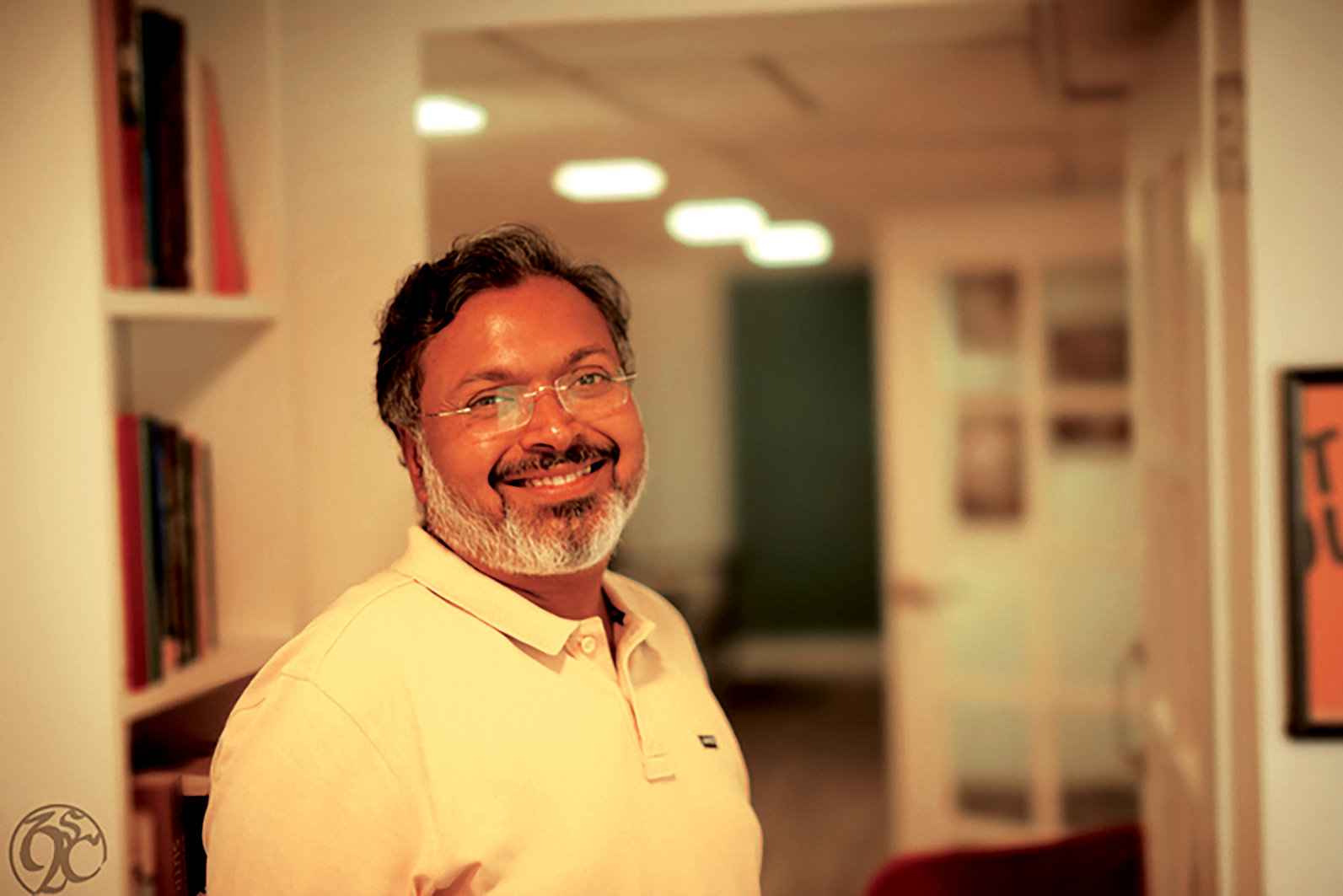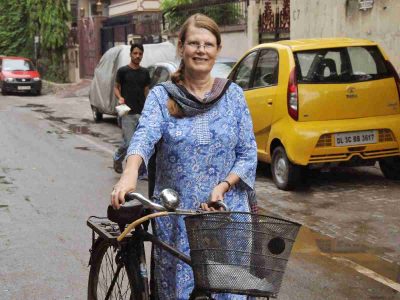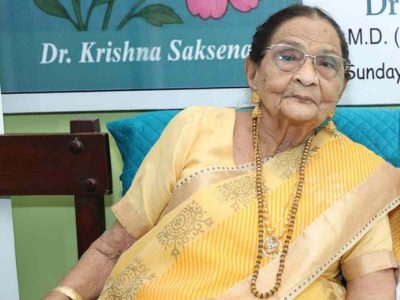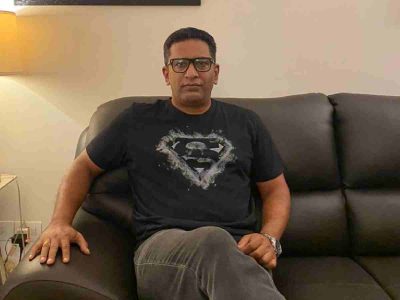Devdutt Pattanaik has written over 52 books on the relevance of sacred stories, symbols and rituals in modern times. Here he answers questions about the ancient epics and modern myths
DEVDUTT PATTANAIK is an Indian mythologist, speaker, illustrator and author. His work focuses largely on areas of myth, religion, mythology and management. He has incorporated Vedic knowledge into human resource management. Some of his most popular books are Jaya (which is a retelling of the Mahabharat), Sita (retelling of the Ramayan), My Gita. Apart from writing, he has been a consultant with Ernst & Young and also served as a Chief Belief Officer at Future Group one of India’s largest retailers.
Q You have done a retelling of Mahabharat and Ramayana and you have elaborately described how there are many retellings of this particular text. Which is your favourite version which thrived and has gone into the consciousness of the modern-day Hindu?
No retelling is great end to end, portions of it will be interesting. For example in India when you tell Ramayan especially in North India they assume it is Tulsi Ramayan. So that is the big popular thing. I like its poetry, I really do. Its poetry is very rhythmic and that is what made it very popular. It’s very well crafted as a work of literature, not necessarily as a work of mythology but it is done for the stage. He did it in those days for the Ram Lila performances so it is designed in a very theatrical way and even today you can’t beat it. It’s really well done.
But in terms of stories you have Kratiwasi Ramayan which is more rural and raw and it is sort of acerbic and there is a lack of polish that you see in Valmiki Ramayan. So you see different kinds of energy coming from different books.
Q Are they meant for different audiences?
Yes, they are meant for different audiences, different times, different geographies so when you have Balramdas Dandi’s Ramayan being written in Odiya, it’s written in the temple culture of Odisha. He is only aware of Tamil Nadu, he is not aware of Kamba Ramayana, which is 10th century, 1,000 years ago. If you read the Kamba Ramayana, its dialogue between Ram and Sita and you read the Valmiki Ramayan, there is a world of difference. The world has changed and I see people talking so confidently about Ramayan and I am like, which version are you talking about? It’s difficult to make people understand , they genuinely believe that there is one book out there .
Q And even with Mahabharat, is it the same thing?
Mahabharat is far more complex. Ramayan at least has a linear story.
Q Do you think this popular narrative of both Ramayan and Mahabharat is entirely focused on good and evil?
The problem is with the language we use. Evil is an Abrahamic concept, not an Indian concept at all. So the moment you say evil in English, you have lost me, because that is not Indian. The concept of evil is the absence of God, the word evil comes from a Christian vocabulary — a space where there is no divine.
So it comes from cultures which don’t have the concept of rebirth. Ramayan and Mahabharat have the context of rebirth, so when you introduce rebirth into the story, everything changes. Are you good because you want to be good or your karma makes you good? Are you bad because you are consciously bad or your karma makes you what you are?
Q Was Hitler an Asura?
Prahlad is the son of Hiranyakashyap and a bhakt of Vishnu so Prahlad is Asur. Baliraj is also an Asur, whose arrival is the Onam festival. So these are concepts that surprise people because a simple sentence like ‘Hitler is an evil man‘, you cannot use that in an Indian language — which tells you the different cultural mindset.
Q You had given an interview to Hindustan Times in 2016 where you said ‘ “No society can exist without myth as it creates notions of right, wrong, good, bad, heaven and hell. So can you elaborate a little bit on what roles did myths play in society?
On a fundamental level, myth gives you meaning and the simplest explanation is: How do you give your life meaning? You need a framework to give yourself meaning. This framework comes from myth. In the absence of myth, you have no framework and therefore no meaning so animals don’t seek meaning and therefore they don’t have storytelling.
Q So you tell yourself stories. Is this to make sense of the world around us?
Yes, to make sense of the world, to make sense of the enemies, to make sense of your anger, rage, everything that surrounds you, you give it a meaning
Q I have collected modern-day myths which we deal in everyday, as in stories, to make sense of the world:
- a) ‘Acchhe din’
Happily ever after, it’s like children’s fairytales, you have to tell children that.
- b) ‘Love jihad’
Yes, it will sustain itself because it constructs the idea of your dilution, that out there, there is a predator that is going to destroy you through love. When other people make sense of the word through love jihad, it gives them the sense of purpose.
- c) ‘The state is secular.’
Yes, it’s a myth. The opposite is also true: ‘The state is religious’ is also a myth.
- d) ‘Hindu Rashtra’
Yeah, like global village.
Q I want to know what cults really are and what are the key ingredients that go into making one?
You have to satisfy the yearning for meaning in people. Every human being is seeking meaning and they don’t think about it — they want just pick it like pre-made, pre-designed, pre-fabricated meaning. That’s what leaders give and brands give.
Q You have tweeted number of times on the difference between Hinduism and the Hindutva. So can you just explain the difference?
See, the word Hindutva comes to us from around the 19th century. It was used by a guy called Chandrakanth Basu who used it in the 19th century for the first time in Bengali. He used Hindutva as a way of talking. In 19th century there were Hindu reformers who were trying to explain Hinduism to the colonial masters to get the approval of this whole samaj movement (Arya Samaj, Prarthna Samaj, Brahmo Samaj). The people following rituals were feeling cornered and a backlash emerged that ‘We will not defend ourselves, we are fine the way we are’.
Hindutva is an idea that emerges with Savarkar in 1920; we don’t know whether he knew about this word. This word was familiar in circles at a common noun level — it just means putting it together tatva and Hindu. But today it has a clear, political branding that cannot be denied.
Q So you are saying Hinduism is a larger idea and Hindutva is a narrow idea. Can you elaborate on that a little more?
The way Hindutva is being presented is basically an idea which says, where do you consider you originated from? Are you a descendent of Manu or are you saying you are descendent of someone outside India?
Q And Hinduism as a concept, how is that?
It’s Atma gyan, nothing else: self-realisation, understanding yourself and the consequences of that, your relationship with people. All these ideas are not necessarily geographically anchored at all, it has manifestations and geographies. In Tamil Naidu it manifests in a particular way, in Odisha it manifest in a different way.
www.newslaundry.com





